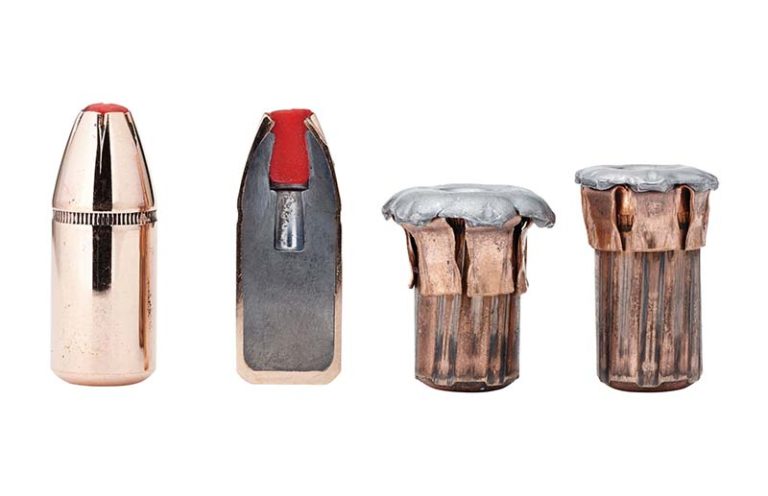
There’s an argument to be made that the do-all .45-70 Government is America’s rifle cartridge.
It all started in 1873. That’s the same year that the two guns that won the West—the Colt Single-Action Army and the 73 Winchester—were introduced. As iconic as both of those guns are, both failed the test of time.
Something else that was introduced in 1873 survived, and that’s the .45-70 Government cartridge. Originally developed for the Trapdoor Springfield and even used in some military Gatling guns, the .45-70 is arguably the metallic cartridge that best represents America.
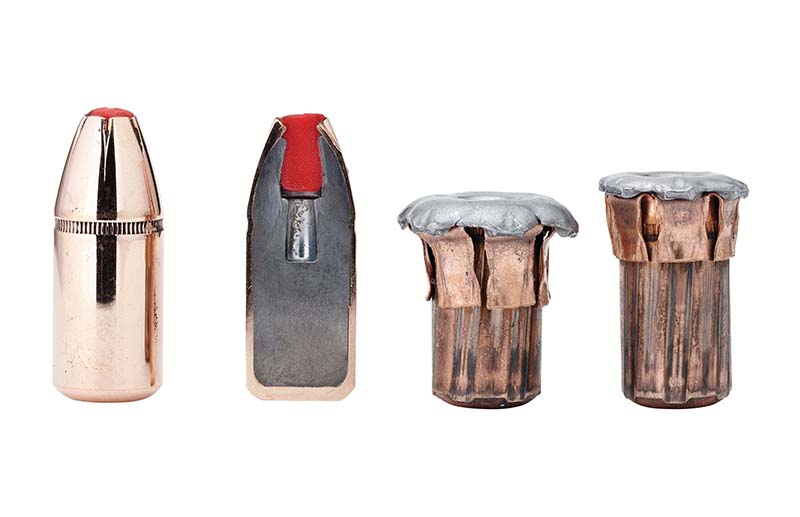
I know what you’re thinking: What about the .30-06 Springfield and the .45 ACP? Admittedly, both are iconic American cartridges that served veterans abroad in two World Wars. But neither have been around as long as the .45-70, nor have they bridged the gap from black to smokeless powder. When it was introduced, the .45-70 was loaded with a 405-grain .458-caliber bullet and 70 grains of blackpowder to a muzzle velocity of about 1,400 fps. The cartridge got its name from its caliber and charge-weight of blackpowder.
Marlin chambered their 1881 lever-action rifle for the .45-70, and that would ultimately be the platform where the cartridge found its longevity. Interestingly, between about 1930 and 1970, the .45-70 appeared to be headed toward extinction. By the standards of that time, its ballistics were underwhelming.
But something kind of magical occurred: As the cartridge’s centennial was approaching, three new .45-70 rifles hit the market. Harrington & Richards introduced it in a replica trapdoor, Ruger introduced it in their No. 1 single-shot, and Marlin began offering the .45-70 in their 1895 lever action.
The Government Afield
Something else very important happened, too; the stronger actions of the Ruger and Marlin could handle more potent .45-70 loads. Today, what you effectively have are three power levels of ammunition for the .45-70 Government.
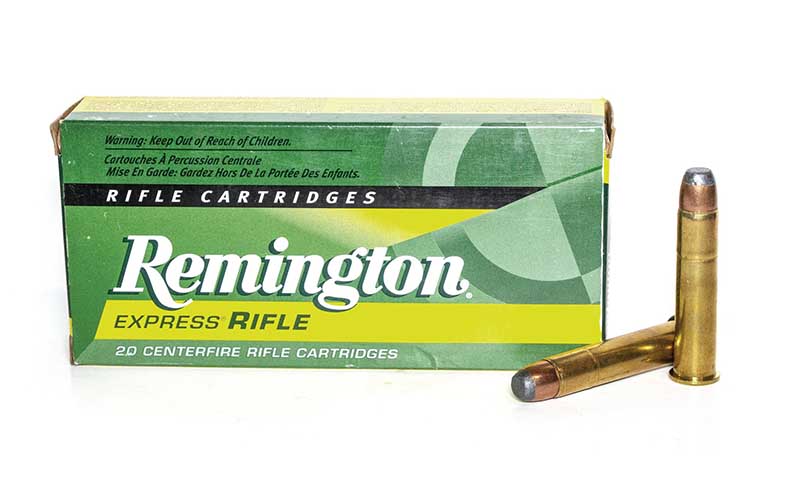
While the rather anemic Remington 405-grain flat-point load represents the maximum safe load in the older guns, the Barnes VOR-TX 300-grain TSX bullet, at almost 2,000 fps, represents a midrange load. And, at the top level of .45-70 performance, you have the Buffalo Bore 430-grain hardcast load at about 1,900 fps. At each level, there are similar loads from other manufacturers, making the .45-70 suitable for anything walking planet Earth.
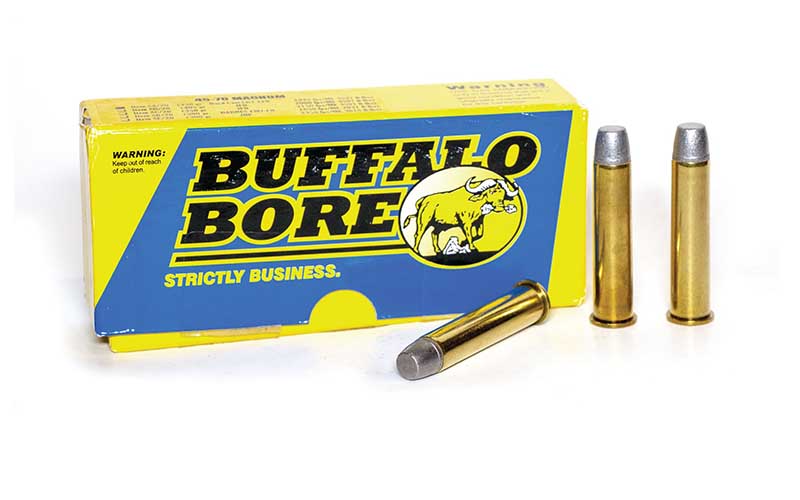
Black bear are typically hunted with hounds or over bait, and both methods don’t require long-range shots. What they do require is a hard-hitting cartridge that’ll incapacitate a black bear—fast. Houndsmen don’t want an injured black bear coming down a tree and tangling with their dogs, and those hunting over bait, typically in thick cover, don’t want to head into that thick underbrush looking for a wounded black bear. Mature black bears generally range in size from 150 to 450 pounds, and given these short-range conditions, the base level .45-70 loads are ideal for the job.
In 2013, I went to Alberta to hunt black bear and carried one of the first Marlin 1895 SBL lever actions in .45-70 Government. On the second day of the hunt, I found myself perched about 25 feet up a spruce tree, looking over a bait site where a dead beaver was hanging. About an hour before dark, a hulk of a black bear came creeping in. I made a plan to shoot him when he stood up to grab the dead beaver, but this guy was bait-site savvy. In one swift motion, he raised up, crunched down on the beaver and turned to run, full out for the cover of the dark timber.
My rifle was outfitted with XS Sights, and I tracked the bruin for about 10 yards. When the white front post found his shoulder, I pressed the trigger. The bear somersaulted forward and piled up in a wad. Range to target was about 35 yards, and the 300-grain Remington bullet passed through the top of the 300-pound bear’s heart and exited on the opposite side.
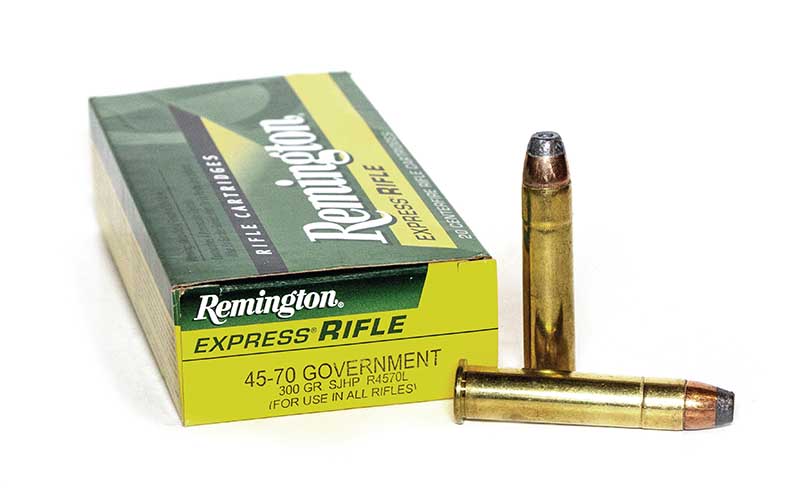
That same summer I found myself in the grassland swamps of Mozambique with the same rifle, hunting African buffalo. However, this time my Marlin was stoked with much more powerful ammunition. As it turned out, I didn’t shoot the buffalo as well as I shot the bear. A bad first shot resulted in a long follow up that ended with my professional hunter and I heading into the long grass looking for a wounded and angry bull.
We spotted him at about 10 yards, bedded and waiting for us. My PH instructed me to shoot him in the shoulder, and I obliged. The buffalo obliged us by jumping to his feet and heading our way. Instantly, my guide smacked the buffalo with the right barrel of his .470 Nitro double rifle. The bull showed no reaction. Little did we know the bullet had hit his horn and nothing else of value. By that time, I’d already levered the Marlin and, knowing I had to stop the buffalo right now, I placed the reticle on his big black head and pulled the trigger. The desired result was achieved, and the charge was over.

That buffalo had taken several 430-grain hardcast bullets, enough that many might think the cartridge and load aren’t enough gun. The reality was that, up until the last shot, I had shot poorly, and buffalo tend to not pay much attention to poorly placed shots. In stark contrast, the effectiveness of this same load was proven in Africa five years later when five other hunters and I took six buffalo. Unfortunately, my shooting on that trip was nothing to brag about either, but four of the six hunters had their buffalo on the ground with a single shot.
Mission-Matched Ammo
The bear and the buffalo hunts illustrate the extremes of the .45-70’s capabilities with the least and most powerful commercial loads offered. However, the most useful loads for the 45-70 are probably the midrange loads, exemplified by the 300-grain Barnes TSX, and two loads each from Hornady and Federal. In 2018, I took a magnificent mountain zebra stallion with the Barnes load, which delivered excellent through and through terminal performance at a range of about 75 yards. It also made short work of a bunch of warthogs, while helping the outfitter control their thriving population on his working cattle farm.
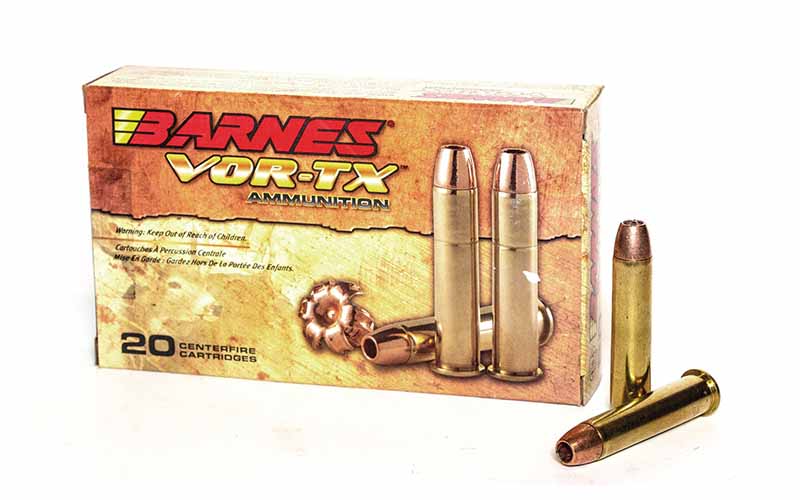
The new Federal HammerDown load was tested extensively in blocks of Clear Ballistics and on feral hogs. This bullet expands wide and creates a massive wound cavity thoroughly sufficient for anything sized from hogs to moose.
Ballistically, this load is a copy of the Federal Fusion 300-grain load, but more important is the fact that the HammerDown cartridge cases are tweaked for optimum performance in a lever gun. This is accomplished with a slight chamfer on the forward edge of the cartridge rim, which makes loading easier. And the cartridge cases are nickel-plated to improve the smoothness of loading, functioning and feeding in lever guns.

Long Live the King
In today’s world of long-range wonder guns, you’d think the .45-70 Government would be headed to extinction once again, but that’s not the case. It’s doubtful the lever gun will ever go out of style in America, and in a lever gun, the .45-70 offers a lot of versatility.
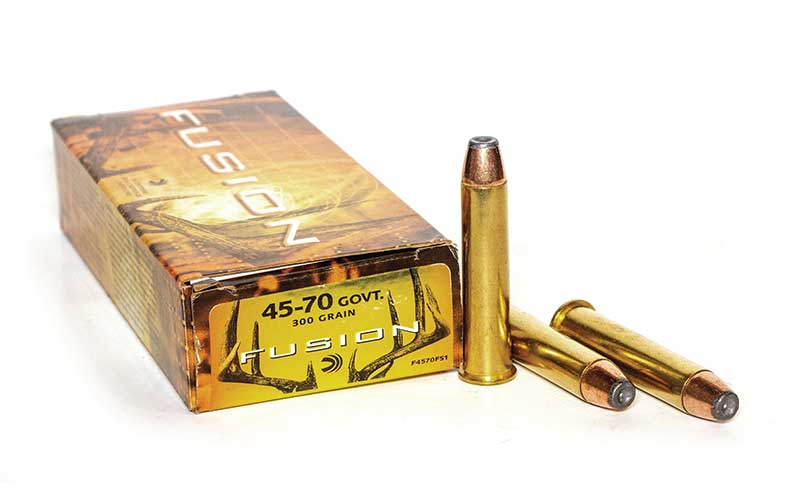
It can serve an eastern whitetail hunter admirably, it can handle moose and elk—and where necessary, it has what’s needed to provide bear defense from browns and grizzlies. In defiance to the fact that the .45-70 has been around longer than any human shooting it today, it’s extremely versatile on a worldwide scale.
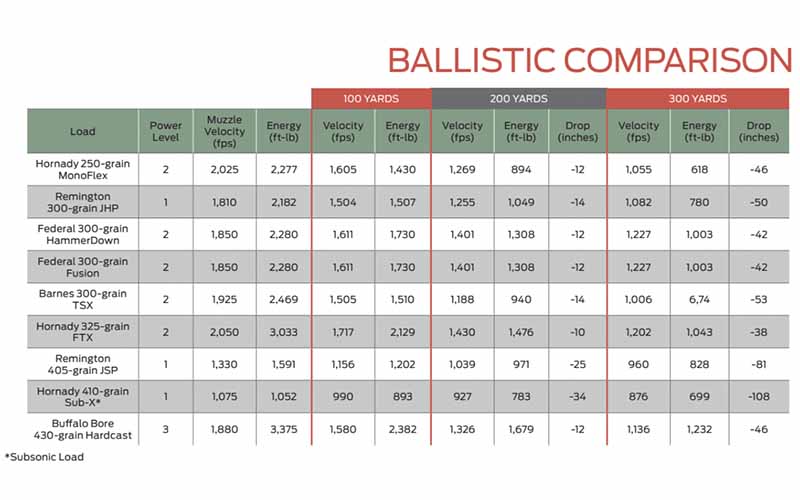
The starring role of the Marlin SBL in the 2017 movie Wind River did nothing but increase the gun and cartridge’s popularity. And now, with the allowance of straight-wall cartridges for deer hunting in states where centerfire rifle cartridges were previously not allowed, it’s safe to say the .45-70 is more popular than ever.
I don’t see that changing anytime soon, and I know for a fact there’ll always be a .45-70 in my gun safe. Well, that’s where it’ll be when it’s not in my hands in West Virginia, Montana, Texas or Africa … or wherever else I might be.
Editor's Note: This article originally appeared in the May 2021 issue of Gun Digest the Magazine.
Raise Your Ammo IQ:
- Beyond The 6.5 Creedmoor: The Other 6.5 Cartridges
- The Lonesome Story Of The Long-Lost 8mm
- Why The .300 H&H Magnum Still Endures
- .350 Legend Vs .450 Bushmaster: Does One Win Out For Hunting?

Next Step: Get your FREE Printable Target Pack
Enhance your shooting precision with our 62 MOA Targets, perfect for rifles and handguns. Crafted in collaboration with Storm Tactical for accuracy and versatility.
Subscribe to the Gun Digest email newsletter and get your downloadable target pack sent straight to your inbox. Stay updated with the latest firearms info in the industry.

![Best Concealed Carry Guns In 2025 [Field Tested] Wilson Combat EDC X9S 1](https://gundigest.com/wp-content/uploads/Wilson-Combat-EDC-X9S-1-324x160.jpg)


![Best 9mm Carbine: Affordable PCCs [Tested] Ruger Carbine Shooting](https://gundigest.com/wp-content/uploads/Ruger-Carbine-Shooting-100x70.jpg)
![Best AR-15: Top Options Available Today [Field Tested] Harrington and Richardson PSA XM177E2 feature](https://gundigest.com/wp-content/uploads/Harrington-and-Richardson-PSA-XM177E2-feature-100x70.jpg)

Great firearm, good description. I own one. But I fail to see how hunting big game with a bait site is sportsmanlike behaviour. A dead beaver dangling for sport? Respectfully, I hope you will rethink your time in, and respect for, the wilderness.
Terrific story. The 45-70 has so much potential especially with the introduction of lighter & faster bullets like Hornady’s 325 grain LeverEvolution ammo.
It’s a bit expensive right now, but for less than $100.00 you can easily acquire a set of reloading dies & sizer & do it yourself. My LEE cast & powder-coated 340 grain RNFP bullet moves out @ 1600 fps, recoil is manageable & out to 100 yards, iron sights work just fine.
I have a Henry in 45-70 and like that I can make plinking loads or heavier hunting loads, great gun.